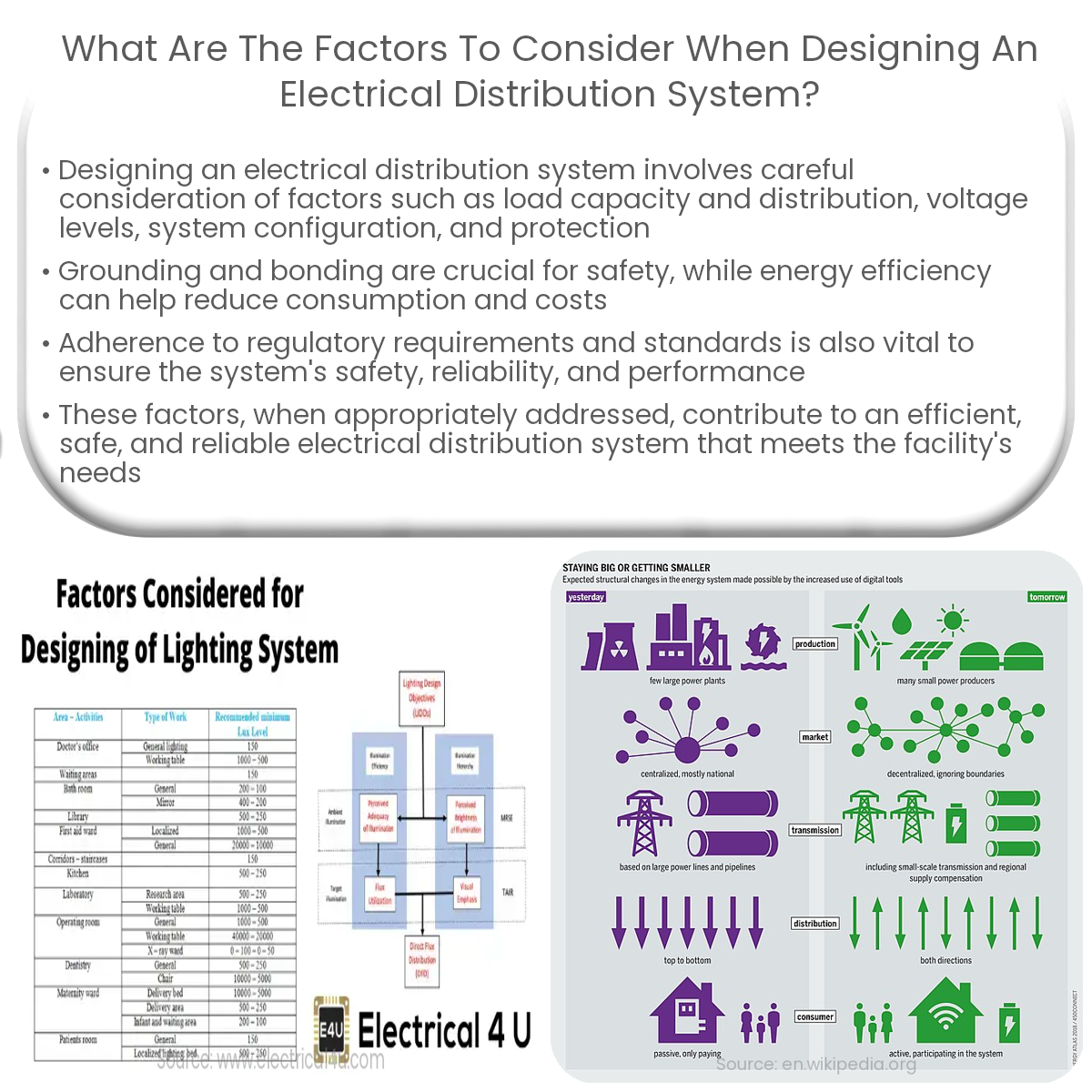Key factors in designing electrical distribution systems include load capacity, voltage levels, configuration, protection, grounding, energy efficiency, and regulatory compliance.
Factors to Consider When Designing an Electrical Distribution System
Designing an electrical distribution system is a critical task that requires considering various factors to ensure efficient, safe, and reliable operation. This article discusses the key factors to consider when designing such a system.
1. Load Capacity and Distribution
Estimating the total load capacity and distribution is crucial for determining the system’s size and components. Designers must consider the types of loads, their power requirements, and their locations within the facility. This helps in selecting appropriate components, such as transformers, switchgear, and cables, and planning for future expansion.
2. Voltage Levels
Selecting the correct voltage levels for the distribution system is important for efficient power transmission and safety. Designers should consider the voltage requirements of the loads, as well as the available power supply voltage, to determine the appropriate voltage levels for the system.
3. System Configuration
The configuration of the distribution system, such as radial, loop, or network, affects its reliability and performance. Each configuration has its advantages and disadvantages, so designers must evaluate the specific needs of the facility and choose the most suitable configuration.
4. System Protection
Protection devices, such as circuit breakers, fuses, and relays, are essential for ensuring the safety and reliability of the distribution system. Designers must consider the types of protection required for different equipment and components, as well as the coordination between these devices to minimize the impact of faults and outages.
5. Grounding and Bonding
Proper grounding and bonding are essential for ensuring the safety of personnel and equipment. Designers must consider the grounding requirements for the distribution system and its components, including the grounding electrode system and the grounding conductors. Additionally, effective bonding between equipment helps minimize the risk of electrical shock and reduces electromagnetic interference.
6. Energy Efficiency
Designing an energy-efficient distribution system can significantly reduce energy consumption and costs. Designers should consider the efficiency of the system’s components, such as transformers and cables, as well as the use of energy management systems to optimize energy usage.
7. Regulatory Requirements and Standards
Complying with local, national, and international codes and standards is crucial for ensuring the safety, reliability, and performance of the distribution system. Designers must be familiar with these regulations and incorporate them into the design process.
In conclusion, designing an electrical distribution system requires careful consideration of various factors to achieve an efficient, safe, and reliable system. By taking these factors into account, designers can create a distribution system that meets the needs of the facility and ensures long-term performance and safety.


